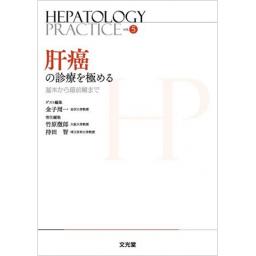1) Filmus J, Church J G, Buick R N : Isolation of a cDNA corresponding to a developmentally regulated transcript in rat intestine. Mol Cell Biol 8 ; 4243-4249, 1988
2) Hsu HC, Cheng W, Lai PL : Cloning and expression of a developmentally regulated transcript MXR7 in hepatocellular carcinoma : biological significance and temporospatial distribution. Cancer Res 57 ; 5179-5184, 1997
3) Zhu Z W, Friess H, Wang L, et al. : Enhanced glypican-3 expression differentiates the majority of hepatocellular carcinomas from benign hepatic disorders. Gut 48 ; 558-564, 2001
4) Capurro M, Wanless I R, Sherman M, et al. : Glypican-3 : a novel serum and histochemical marker for hepatocellular carcinoma. Gastroenterology 125 ; 89-97, 2003
5) Hippo Y, Watanabe K, Watanabe A, et al. : Identification of soluble NH2-terminal fragment of glypican-3 as a serological marker for early-stage hepatocellular carcinoma. Cancer Res 64 ; 2418-2423, 2004
6) Chen M, Li G, Yan J, et al. : Reevaluation of glypican-3 as a serological marker for hepatocellular carcinoma. Clin Chim Acta 423 ; 105-111, 2013
7) Capurro M I, Xiang Y Y, Lobe C, et al. : Glypican-3 promotes the growth of hepatocellular carcinoma by stimulating canonical Wnt signaling. Cancer Res 65 ; 6245-6254, 2005
8) Capurro M I, Shi W, Sandal S, et al. : Processing by convertases is not required for glypican-3-induced stimulation of hepatocellular carcinoma growth. J Biol Chem 280 ; 41201-41206, 2005
9) Filmus J, Capurro M : Glypican-3 : a marker and a therapeutic target in hepatocellular carcinoma. FEBS J 280 ; 2471-2476, 2013
10) Takashima M, Kuramitsu Y, Yokoyama Y, et al. : Proteomic profiling of heat shock protein 70 family members as biomarkers for hepatitis C virus-related hepatocellular carcinoma. Proteomics 3 ; 2487-2493, 2003
11) Chuma M, Sakamoto M, Yamazaki K, et al. : Expression profiling in multistage hepatocarcinogenesis : identification of HSP70 as a molecular marker of early hepatocellular carcinoma. Hepatology 37 ; 198-207, 2003
12) Di Tommaso L, Franchi G, Park YN, et al. : Diagnostic value of HSP70, glypican 3, and glutamine synthetase in hepatocellular nodules in cirrhosis. Hepatology 45 ; 725-734, 2007
13) Kawakami T, Hoshida Y, Kanai F, et al. : Proteomic analysis of sera from hepatocellular carcinoma patients after radiofrequency ablation treatment. Proteomics 5 ; 4287-4295, 2005
14) 三善英知, 鎌田佳宏, 魚住尚史 : 糖鎖がんマーカー. 実験医学 31 ; 1526-1532, 2013
15) Block TM, Comunale MA, Lowman M, et al. : Use of targeted glycoproteomics to identify serum glycoproteins that correlate with liver cancer in woodchucks and humans. Proc Natl Acad Sci U S A 102 ; 779-784, 2005
16) Kladney RD, Bulla GA, Guo L, et al. : GP73, a novel Golgi-localized protein upregulated by viral infection. Gene 249 ; 53-65, 2000
17) Kawamoto S, Moriwaki K, Nakagawa T, et al. : Overexpression of alpha1,6-fucosyltransferase in hepatoma enhances expression of Golgi phosphoprotein 2 in a fucosylation-independent manner. Int J Oncol 39 ; 203-208, 2011
18) Liang H, Block TM, Wang M, et al. : Interleukin-6 and oncostatin M are elevated in liver disease in conjunction with candidate hepatocellular carcinoma biomarker GP73. Cancer Biomark 11 ; 161-171, 2012
19) Mao Y, Yang H, Xu H, et al. : Golgi protein 73 (GOLPH2) is a valuable serum marker for hepatocellular carcinoma. Gut 59 ; 1687-1693, 2010
20) Riener MO, Stenner F, Liewen H, et al. : Golgi phosphoprotein 2 (GOLPH2) expression in liver tumors and its value as a serum marker in hepatocellular carcinomas. Hepatology 49 ; 1602-1609, 2009
21) Yamamoto K, Imamura H, Matsuyama Y, et al. : AFP, AFP-L3, DCP, and GP73 as markers for monitoring treatment response and recurrence and as surrogate markers of clinicopathological variables of HCC. J Gastroenterol 45 ; 1272-1282, 2010
22) Yamamoto Y, Kosaka N, Tanaka M, et al. : MicroRNA-500 as a potential diagnostic marker for hepatocellular carcinoma. Biomarkers 14 ; 529-538, 2009
23) Giordano S, Columbano A : MicroRNAs : new tools for diagnosis, prognosis, and therapy in hepatocellular carcinoma? Hepatology 57 ; 840-847, 2013
24) Kojima K, Takata A, Vadnais C, et al. : MicroRNA122 is a key regulator of alpha-fetoprotein expression and influences the aggressiveness of hepatocellular carcinoma. Nat Commun 2 ; 338, 2011
25) Kamada Y, Fujii H, Sawai Y, et al. : Serum Mac-2 binding protein levels as a novel diagnostic biomarker for prediction of disease severity and nonalcoholic steatohepatitis. Proteomics Clin Appl 2013.
26) Kamada Y, Akita M, Takeda Y, et al. : Serum fucosylated haptoglobin as a novel diagnostic biomarker for predicting hepatocyte ballooning and nonalcoholic steatohepatitis. PLoS One. 8 : e66328, 2013.
